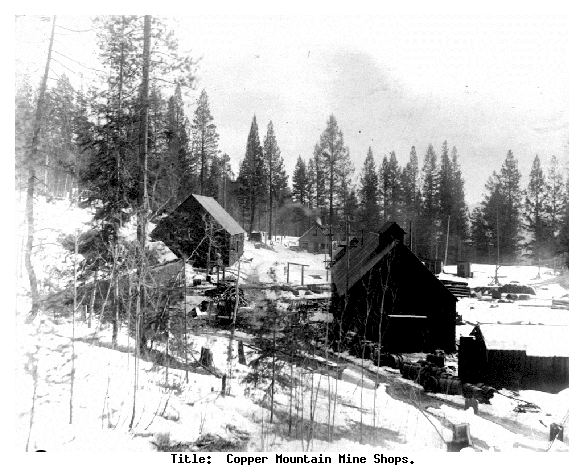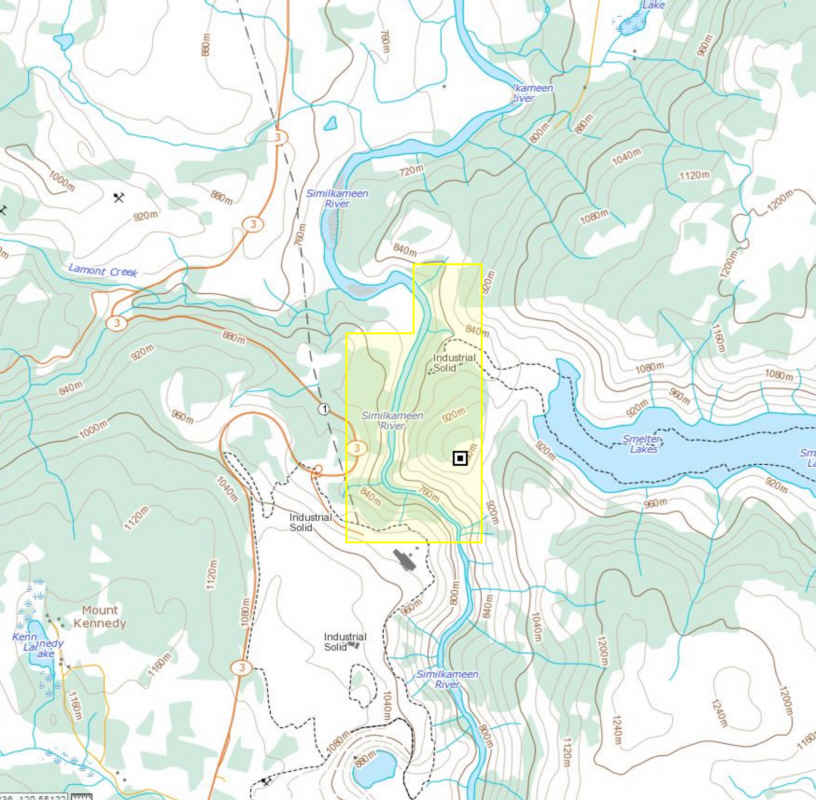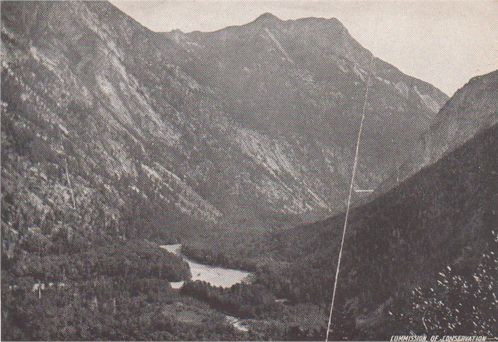


Located near the Historic and the newly opened Bralorne Mine and the Pioneer Mine in The Bridge River Area.

Princeton in 1890
Intially Coal was discovered in Similkameen before the mainland was proclaimed a crown colony on 19 November, 1858. In the summer and fall of that year John Fall Allison explored and settled in the valley and found coal on the right bank of the Similkameen, just above the forks, near the east end of the river bridge, and in the hill that rises on the south side of the new road to Hedley. The Allisons set up a large stock ranch as well as staked claims in gold, coal and copper. Known by the name Vermilion Forks, after the red, yellow and orange ochre gathered by the natives for face painting the area was also referred to as Allison's or Allison Flats.
In 1860 the name was change to Princeton, in honour of Prince Edward the Prince of Wales. This outcropping attracted early settlers who mined their own coal, and in winter-time hauled it on sleighs over the ice to their homes.

The site of Similkameen’s first coal discovery was not forgotten. In 1898 the Vermilion Forks, Mining and Development Co. Ltd., was organized, and bought from S.D. Sands the Princeton townsite. Mr. Sands had married Rose Allison, from whose father he had the land. The company secured 1200 acres of coal land adjoining Princeton. In 1909 John Gulliford tunnelled "Discovery Hill," and hauled coal by horse-team to Princeton and Hedley. By this time its commercial possibilities were apparent. W.J. Waterman had interested Authur Hickling in Similkameen, and this led to the formation of an English company which financed and reorganized the Vermilion Forks Company under the name of Princeton Coal and Land Co. Ltd. In 1909 Ernest Waterman was appointed local director, with Charles Graham superintendent of the Princeton colliery. The output that year was only 150 tons but the following year (James Holden mine manager) it rose to 11,868 long tons. In 1909 only 32 men were employed. In 1910 the number rose to 67, and by 1912 there were 110 men on the payroll.
As early as 1908, Princeton Mining and Development Company Ltd. (MINFILE No 092HSE091) completed 550 metres of drifting, crosscutting and raising in the Nos. 2 and 3 tunnels between 1920 and 1927, after initially mining 15 tonnes of ore in 1919. The ore graded 15.2 per cent copper and 64.5 grams per tonne silver (National Mineral Inventory card). The company also excavated several smaller adits and numerous trenches and pits.
Allenby was an important copper-mining company town in the Similkameen Country of the Southern Interior of British Columbia, Canada, just south of the town of Princeton.It was for a short time the location of the Copper Mountain post office but that name was reinstated to its original site when the neighbouring Copper Mountain mining town, affiliated with the same mine (the Copper Mountain Mine of the Canadian Copper Company), was revived.
From 1920 to 1957, the Copper Mountain Mine shipped 35 million tons of ore containing 600 million pounds of copper to the concentrator at Allenby. The tortuous railroad grade still clings precariously to the wall of the Similkameen River Canyon. Exhaustion of the known orebody forced closure of the mine, but exploration continues in search of the other ore in the region.

Copper Mountain ore was discovered in the 1880s by a father & son team named Jameson. They told R.A. Brown, a fur buyer, of their find and he was the first to stake a claim in 1895. Little work was done there until 1905 when the BC Copper Co. started drilling on a few claims. The results were disappointing in that the ore contained a high percentage of alumina which presented smelting difficulties by the method used at that time.
A few years later, the smelting problems were solved by the discovery of a new process and, in 1913, BC Copper set up two mining camps. The cost of these new mines and equipment resulted in the formation of a new company, Canada Copper, which undertook construction of a mill between Princeton and the mine. The first ore was shipped from the mine in late 1920, but the price of copper dropped tand the operation closed after only two months.
In October of 1882, a claim was filed by Jameson and Brown and the first mine worked was the Sunset followed by a number of others. Because the ore was refractory, treatment difficulties prevented any monumental success until the mines were acquired by the Allenby Copper Company. Huge smelting plants at Allenby were developed at the bottom of the steep grade from the mines. In 1926, 665,000 tons of ore went to the Allenby mills. Operations continued successfully until April of 1953 when it was announced that due to falling copper prices, operations would cease permanently. This meant complete abandonment of Copper Mountain and Allenby.
Allenby Copper Co., a subsidiary of the Granby Consolidated Mining & Smelting Co., was incorporated on May 17, 1923, and reopened the mine. Over the next 30 years, productivity from the mine fluctuated with the price of copper. Finally, low metal prices and expensive railway freight rates caused the mine to close down again.

Newmont Mining Corporation of Canada (Newmont) purchased Granby's entire mining interest in the district and began mining again in 1972. In 1979 a new primary crusher and conveyer system was installed. In 1988 Cassiar Mining Corporation (later to become Princeton Mining Corp.) purchased Similco Mines Ltd. which owned the property. Production continued mining from Pits 3 and 1 until the mine closed down in late 1993 and stayed on a "care and maintenance" basis until copper prices improved in mid 1994. Mining was sporadic until the operation closed once more in 1996. In 2008 the Copper Mountain Mining Company anounced that it planned to re-open the mine in 2010, based on a feasibility study which estimated its production life was 15 years. The company's plan was idesigned to produce about 100-million pounds a year of copper, in a copper concentrate with gold and silver credits.

(Desktop & Mobile Ver.)
Google Maps
~~~~ View Here ~~~~ 
Can. Topo Maps
~~~~ View Here ~~~~

Technical Assessment Report 2014
Granby Gold Inc.
Suite 615, 700 West Pender St.,
Vancouver, BC V6C 1G8
Phone: 604-250-7360
Email: Here